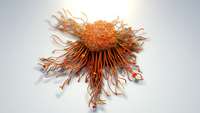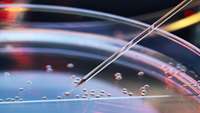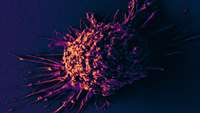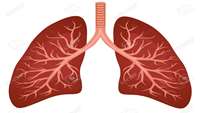Targeting key gene could help lead to Down syndrome treatment
Using stem cells that can turn into other cells in the brain, researchers developed two experimental models a living 3D "organoid" model of the brain and a mouse brain model with implanted human cells to investigate early brain development linked to Down syndrome, according to the study in the journal Cell Stem Cell. The study focused on human chromosome 21 gene OLIG2.
Cancer cells are quick-change artists adapting to their environment
Until now, researchers have assumed that the growth of solid tumors originates from cancer stem cells characterized by specific surface markers, which develop in a fixed, hierarchical order. Accordingly, such cancer stem cells are responsible for tumor progression and produce specific types of more differentiated cancer cells whose fates are predetermined.
Study reveals large molecular differences between stem cells grown on different biomaterials
The genes necessary for the growth and survival of stem cells are influenced by the biomaterials on which theyre cultured, researchers at the University of Toronto have found.
Stem cells implanted into the brain stop epilepsy seizures in rats
For people with severe epilepsy, no medication is effective – but a radical approach of implanting stem cells into the brain could stop seizures at their source.
Stem Cells Technology Will Pave the Way for Activists in the Cardiovascular Field
“Stem cells, tissue engineering and regenerative medicine in cardiovascular system” is the title of a symposium held to provide the foundation for learning about and developing the updated activities of this field.
Flourishing of Ecosystem of Stem Cells Technology Will Be Accelerated in North Khorasan
Secretary of the council for stem cells science and technology accelerated the pace of the development and flourishing of innovation and technology ecosystem in the province in the field of stem cells during his trip to North Khorasan.
Multiplexed genome engineering by Cas12a and CRISPR arrays encoded on single transcripts
The ability to modify multiple genetic elements simultaneously would help to elucidate and control the gene interactions and networks underlying complex cellular functions. However, current genome engineering technologies are limited in both the number and the type of perturbations that can be performed simultaneously.
Heart-specific Laminin Isoform Aids Cardiovascular Progenitor Generation for Cardiac Therapy
Researchers from the laboratory of Karl Tryggvason (Karolinska Institute, Stockholm, Sweden) have previously reported on the generation and characterization of basement membrane laminin isoforms that can promote stem cell differentiation in vitro [1-3].
Extracellular Vesicle‐Educated Macrophages Promote Early Achilles Tendon Healing
Tendon healing follows a complex series of coordinated events, which ultimately produces a mechanically inferior tissue more scar‐like than native tendon. More regenerative healing occurs when anti‐inflammatory M2 macrophages play a more dominant role.
Researchers use gene editing with CRISPR to treat lethal lung diseases before birth
Using CRISPR gene editing, a team from Penn Medicine and Childrens Hospital of Philadelphia (CHOP) have thwarted a lethal lung disease, in an animal model, in which a harmful mutation causes death within hours after birth. This proof-of-concept study, published in Science Translational Medicine this week, showed that in utero editing could be a promising new approach for treating lung diseases before birth.












